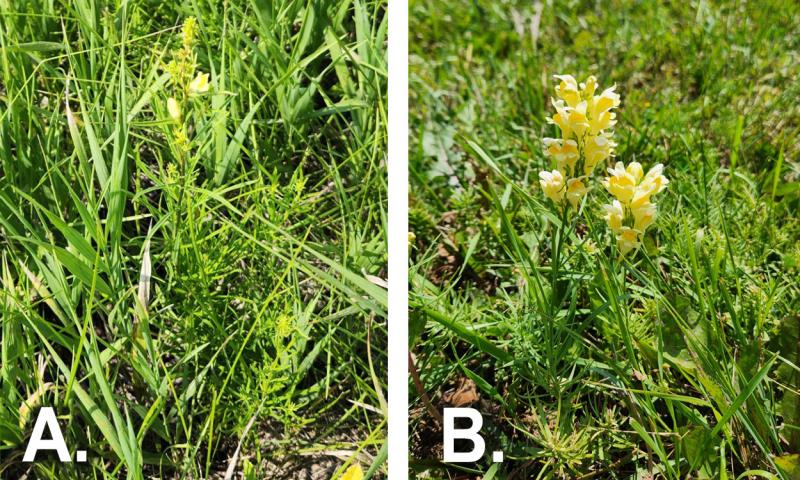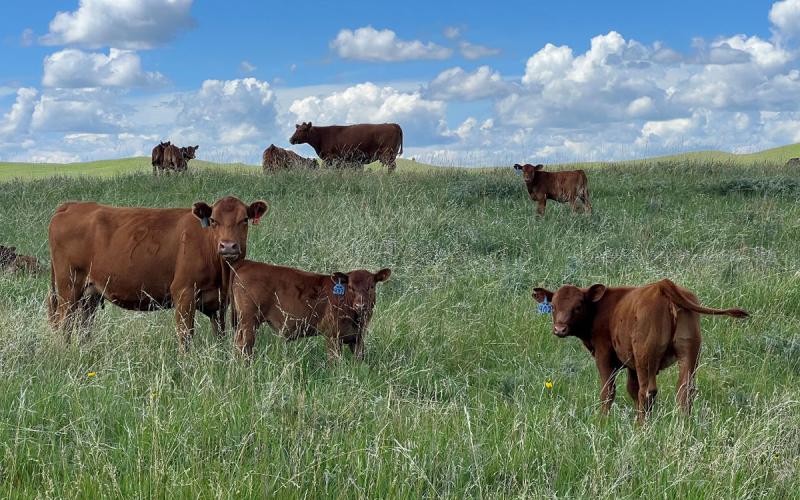Written collaboratively by Eric Jones, Philip Rozeboom, Jill Alms, and David Vos.
Yellow toadflax is a difficult-to-manage weed that infests pastures and rangeland. Only a few herbicides are effective on this weed species: picloram, chlorsulfuron, and metsulfuron (these herbicide active ingredients are sold under various tradenames). Refer to the most-recent SDSU Extension Weed Control: Noxious Weeds publication for more information.
Spraying and Scouting Tips

Compared with other weeds, where the herbicide needs to be applied before flowering, yellow toadflax should be sprayed when flowers are present (Figure 1). Yellow toadflax usually begins to flower in late July. On a recent visit to field research sites near Eureka, South Dakota on August 12, 2024, flowering yellow toadflax plants were not observed in pastures on the drive there. At the research site, the plants were not flowering either. Spray records indicated that the research trials were sprayed when plants were flowering at an earlier date (August 8, 2023).
The difference in flowering dates for yellow toadflax is likely influenced by the environment. This growing season has been wet and cool, while the growing season last year was dry and hot. Despite the delay in flowering, plants will eventually flower; yellow toadflax has been documented to flower as late as October in some areas. While yellow toadflax was not flowering in this particular area, scouting should be done routinely in areas where the weed has been present. Since vegetative stage, yellow toadflax can be difficult to distinguish from grasses and other desirable vegetation, deliberate and careful scouting must be conducted (Figure 1). Areas where vegetative yellow toadflax is present should be recorded so management efforts can be implemented where necessary.

